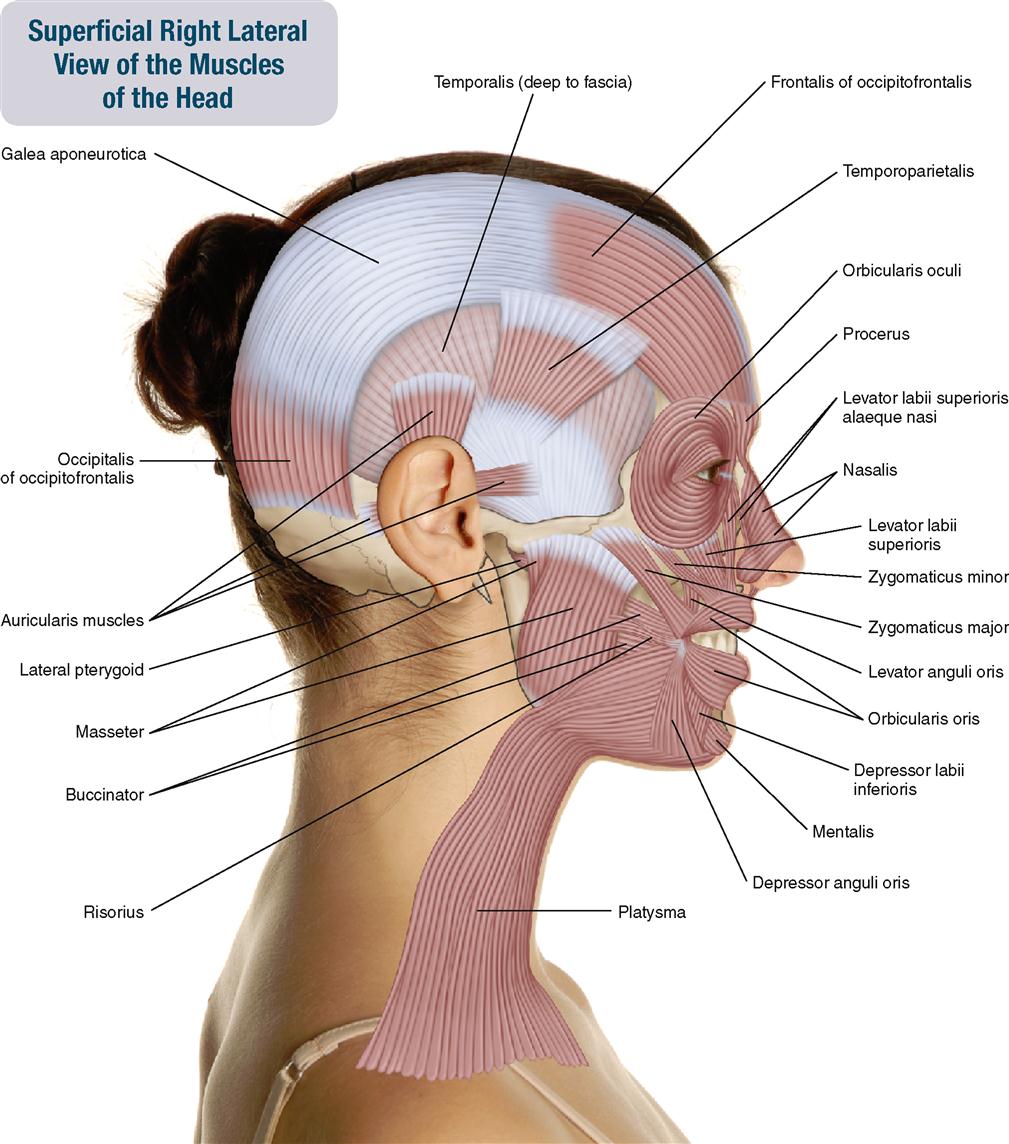Lateral Side Facial Face Muscles Stock Photo Image 48360396

Muscles of the face and neck lateral view (2) Diagram Quizlet
The SMAS consists of three distinct layers: (1) a fascial layer superficial to the muscles, (2) a layer intimately associated with the facial m., and (3) a deep layer extensively attached to the periosteum of facial bones (Fig. 2.2 ). Fig. 2.2 Photographs showing the dissection of SMAS and subSMAS fat.

FileLateral head anatomy.jpg Wikimedia Commons
The facial muscles are the main constituents of your face, playing a significant role in facial expression. Also known as the mimetic muscles, these skeletal muscles allow you to smile, wink, frown, express fear, and so on. Learn and practice the facial muscles more effectively using our facial muscles quizzes and labeled diagrams.

Dentistry lectures for MFDS/MJDF/NBDE/ORE A Note on Muscles of the
1.10.1 Aging Process of the Facial Tissue. The anatomical structures of the face related to aging comprise of the facial bone, fat tissue, fibrous connective tissue, and facial muscles. The bony tissue is a structure that forms the basic frame of the face and bone remodeling goes throughout lifelong period.

Zygomaticus major hires stock photography and images Alamy
Definition. Elevates mandible as in closing mouth, assists in side-to-side movement of mandible, and protracts (protrudes) mandible. Location. Term. Sternocleidomastoid Muscle. Definition. Contraction of both muscle flexes the cervical part of the vertebral column and draws the head forward; contraction of one muscle rotates the face toward.

9. Muscles of the Head Musculoskeletal Key
The facial muscles (also known as the muscles of facial expression) are situated within the subcutaneous tissue of the face and responsible for the movements of skin folds, providing different facial expressions.. The facial muscles originate from bones of the facial skeleton (viscerocranium) and insert into the skin.; The facial muscles are mostly grouped around the natural orifices of the.

Facial Muscles and Expressions Classic Human Anatomy in Motion The
The facial muscles are just under the skin ( subcutaneous) muscles that control facial expression. They generally originate from the surface of the skull bone (rarely the fascia), and insert on the skin of the face. When they contract, the skin moves. These muscles also cause wrinkles at right angles to the muscles' action line.

Face And Neck Muscle Diagram / Facial Muscles Images Stock Photos
The neck muscles, including the sternocleidomastoid and the trapezius, are responsible for the gross motor movement in the muscular system of the head and neck. They move the head in every direction, pulling the skull and jaw towards the shoulders, spine, and scapula. Working in pairs on the left and right sides of the body, these muscles.

Muscle Pictures I No Labels Chandler Physical Therapy
The facial muscles can broadly be categorised into three groups - orbital, nasal and oral. In this article, we shall look at the anatomy of the muscles of facial expression - their attachments, actions and clinical relevance. Fig 1 - Innervation to the muscles of facial expression via the facial nerve (CN VII) Orbital Group

6 Lateral view of the Facial Muscles Download Scientific Diagram
Lateral View of Skull. A view of the lateral skull is dominated by the large, rounded cranium above and the upper and lower jaws with their teeth below.. The origins of the muscles of facial expression are on the surface of the skull. The insertions of these muscles have fibers intertwined with connective tissue and the dermis of the skin.

Face And Neck Muscle Diagram Tommy Gibbons
The muscles of facial expression are innervated by the facial nerve (cranial nerve VII), and the muscles of mastication are innervated by the mandibular division of the trigeminal nerve (cranial nerve V3). [1]

The Muscles of the Head allowing face mimics and mastication
Structure and Function The anatomy of the face can divide into three main regions: upper face, middle face, and lower face. The entire face is covered by skin superficially, while the deep anatomy contains muscles, fat pads, nerves, vessels, and bones. Upper Face

Body muscle anatomy, Head muscles, Muscle
The facial muscles involved in chewing are: Buccinator, a thin muscle in your cheek that holds each cheek toward your teeth. Lateral pterygoid, a fan-shaped muscle that helps your jaw open. Masseter, a muscle that runs from each cheek to each side of your jaw and helps your jaw close.

Face Muscles. FaceMuscle. LateralFaceMuscles. Anatomy.
Facial Muscles: Anatomy The facial muscles (also called mimetic muscles) control facial expression and are supplied by the facial nerve. Most of them originate from the skull and attach to the skin around the facial openings, which serve as a method to group or classify them.

Head muscles Stock Image C020/0368 Science Photo Library
The facial muscles are located around facial openings (mouth, eye, nose and ear) or extend over the skull and neck. Hence, they are divided into several groups; Muscles of the nose (nasal group) Muscles of the cranium and neck (epicranial group) Muscles of the external ear (auricular group) Muscles of the mouth or oral group (buccolabial group)

Musculos Da Face Lateral
The superficial motor nerves to the muscles of facial expression from the facial nerve (temporal, zygomatic, buccal, mandibular, cervical branches, and the posterior auricular nerve) are described. The sensory nerves to the face (branches of each of the three divisions of the trigeminal nerve or cervical nerves) are delineated.

Axial Muscles of the Head, Neck, and Back · Anatomy and Physiology
The facial muscles are positioned around facial openings (mouth, eye, nose and ear) or stretch across the skull and neck. Thus, these muscles are categorized into several groups; Muscles of the mouth (buccolabial group) Muscles of the nose (nasal group) Muscles of the cranium and neck Muscles of the external ear (auricular group)